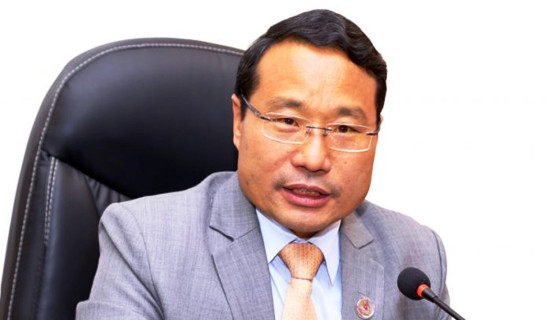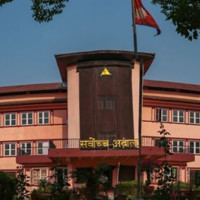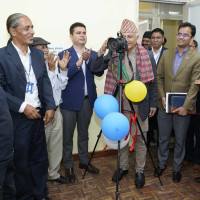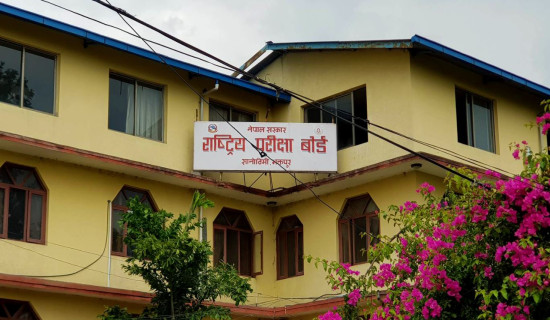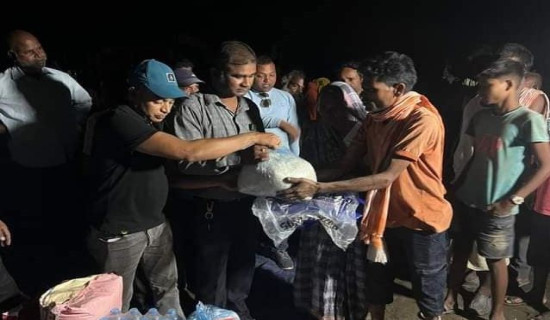- Friday, 26 April 2024
Concessional Loans
For Attaining Economic Well-Being
Aditya Pokhrel
Resource Mobilisation
The government of Nepal offers concessional loans based on the Unified Procedure on Interest Subsidy for Concessional Loans, 2075 B.S (Third Amendment) to mobilise resources in productive sectors, create self-employment opportunities for educated, unemployed youth in the country, and develop and promote traditional skills through entrepreneurship with the use of modern methods and technology.
It assisted the victims of the catastrophic earthquake of 2072 B.S with private housing loans at minimal interest rates. By motivating women, marginalised communities and the target group of enthusiastic and enterprising students, concessional loans can aid in creating a self-reliant economy tumbling the income inequalities persistent therein.
The exquisiteness of the concessional loan lies in its interest rate. The interest subsidy granted on concessional loans is generally 5 per cent to all the headings mentioned above, except for women, which are specified at 6 per cent.
The interest rate is determined by adding a 2 per cent margin on the base rate provided by banks and financial institutions and subtracting with the particular interest subsidy of either 5 or 6 per cent. Likewise, there is the provision of the insurance of concessional loans except for the Commercial Agriculture and Livestock Concessional loan and the loan for the Cloth Industry exceeding Rs. 10 million.
In the case of commercial agriculture and livestock loans, provision has been made to disburse loans up to Rs. One million based on the personal guarantee of one family member or also on more commercial projects there stands the provision to disburse loan on the specified amount of collateral.
In addition, there is the provision of educated youth self-employment loans pledging the educational certificate that they have earned, loans targeted at youth returning from foreign employment on project security, women entrepreneur loans on individual or collective guarantees, Dalit community business development loans on individual or collective guarantees up to Rs. One million and private housing construction loans for earthquake victims.
Banks and financial institutions lag responsibility for securing loans concerning the provision of mandatory loan security issued by the Credit Guarantee Fund. There is also a provision for the fund to follow a concise process based on the category, purpose, amount, and level of risk of the loan. In that upshot, Banks and Financial Institutions are liable to bear 50 per cent of the loan security, while the remaining 50 per cent fee has to be paid to the concerned Banks and Financial Institutions from the Grant-seeking account maintained at Nepal Rastra Bank.
Existing Scenario
According to the data of the first nine months of the current Fiscal Year 2021/22, 145,693 borrowers have received a total amount of concessional loan of Rs. 255.15 Billion. A year ago in the same period the concessional loan amounting to Rs. 165 Billion was disbursed to the 89,879 borrowers.
Up to nine months into the current fiscal year, the amount of loans disbursed to 59,931 borrowers under the heading of Commercial agriculture and Livestock Loan was Rs. 162.2 Billion. Likewise, Rs. 78.15 Million was disbursed to 150 borrowers under the heading of Educated Youth Self-employment loan, Rs. 782.8 Million to 956 borrowers on Youth projects returning from foreign employment, and Rs. 87.64 Billion has been disbursed to 82,926 Women Entrepreneurs.
In addition, 1106 people are equipped with the dalit community entrepreneurship development loan which amounts to rs. 767.82 million, 137 people with higher technical and commercial education loans which amount to rs. 46.81 million, private housing construction for earthquake victims loan nourishes 213 borrowers with loan amounts of rs. 62.4 million and 245 borrowers are pleased with a loan amount of rs. 3.57 billion under the heading of concessional loans to run the clothes industry.
After COVID-19 the amount and borrowers of the concessional loans are seen to be upsurge profusely signifying the loan as an effective tool to promote the local entrepreneurship. The attraction towards poultry and livestock farming, organic vegetable farming and horticulture is seen to be amplified and has contributed to creating local employment prospects and hence the generation of the local income.
The economy is tending toward being self-reliant on the production of Milk and Chicken meat. Equally, several females are benefitting from the Concessional loans to Female Entrepreneurs which has led them to relish economic independence, generate self-employment, and earn a sound amount followed by enrichment in the family income as a whole. Correspondingly, Dalit communities are content with the concessional loan because it has helped them preserve their local skills and artefacts upon embellishment of the modern dimensions.
With the help of the Loan on technical education, several prioritised sectors, students, and marginalised and economically backward communities are enhancing their technical skills in entrepreneurship and accordingly, on one side they have come up with innovative ideas for running businesses and on the other, they are earning a profuse amount of income.
With the same flow, the earthquake victims are staying at their domicile through the subscription of the loan, the textile industry is running fair enough and with these, there are more examples to cite in the coming days. In aggregate, the economic activities of the nation are wobbling quite fair enough even after the aftershocks of the pandemic.
The budget for the Fiscal Year 2022/23 has added several provisions regarding the Concessional loan. The points numbered 28, 52, 88, 111, 115, 119, 134, 192, 299, and 318 in the budget specify the additions in the several provisions regarding it.
These include providing concessional loans to farmers through microfinance, providing loans on a project basis to develop young entrepreneurs and promote innovation, and encouraging businesses run by young entrepreneurs and youth returning from foreign employment. For this, the government with the central bank will amend the procedural act thereby creating a challenge fund.
It also mentions that the concessional loans will be continued for the revival of the tourism sector. To provide self-employment to the working manpower of the Dalit community demarcated below the absolute poverty line, the skill-based training, the concessional loan with unsecured loans including seed capital as an incentive for running other businesses besides traditional profession, and knowledge and skill-based business training will be provided.
The budget further mentions that the arrangements will be made for the disbursement of loans at a maximum 5 per cent concessional interest rate for the operation of agriculture, animal husbandry, vegetable farming, rural enterprise and business through the establishment of the cooperatives by landless Dalits, Squatters, Raute, Vanakariya, Musahar, and Dom communities.
With these kinds of stipulations, the government is seen as akin to imparting income inquisitiveness for equitable economic participation. Not only this but also the concessional loan shall be provided for the establishment of timber seasoning and treatment plants in the respective province to enhance the quality of timber produced with the participation of the private sector.
Likewise, the government is cautious enough to make necessary arrangements to provide concessional loans on the security of enterprise proposals under the youth start-up programme on pledging the certificate. To bolster the participation of women in the income generation, training on entrepreneurial housewife programme will be imparted for housewives. Likewise, according to the interest of women, concessional loans will be provided through entrepreneurship training and microfinance.
Effective Tool
Though concessional loans have been an effective tool to curlicue productive activities, alleviate poverty, generate employment opportunities, enhance income, raise the standard of living and many more, quandary over their optimum utilisation still remains.
The procedure has explicitly explained the lending clauses, raising our hope that the bank and financial institutions related procedures will be followed wisely. The central bank of Nepal is, however, cautious regarding the matter and is continuously providing directives for the effective implementation of the procedure regarding concessional loans.
With this, the monetary policy for the Fiscal Year 2021/22 also mentioned the arrangement of conducting an independent test to ensure the effectiveness of the concessional loan in the coming days. With a stable financial and economic system in the country, Concessional Loans can be a way to speed up the economic development with an increase in the production followed by a reduction in the BOP deficit, a decrease in Imports, and an increase in exports.
(The writer is Assistant Director at Nepal Rastra Bank. Views expressed in this article belong to him and not of his organisation)



